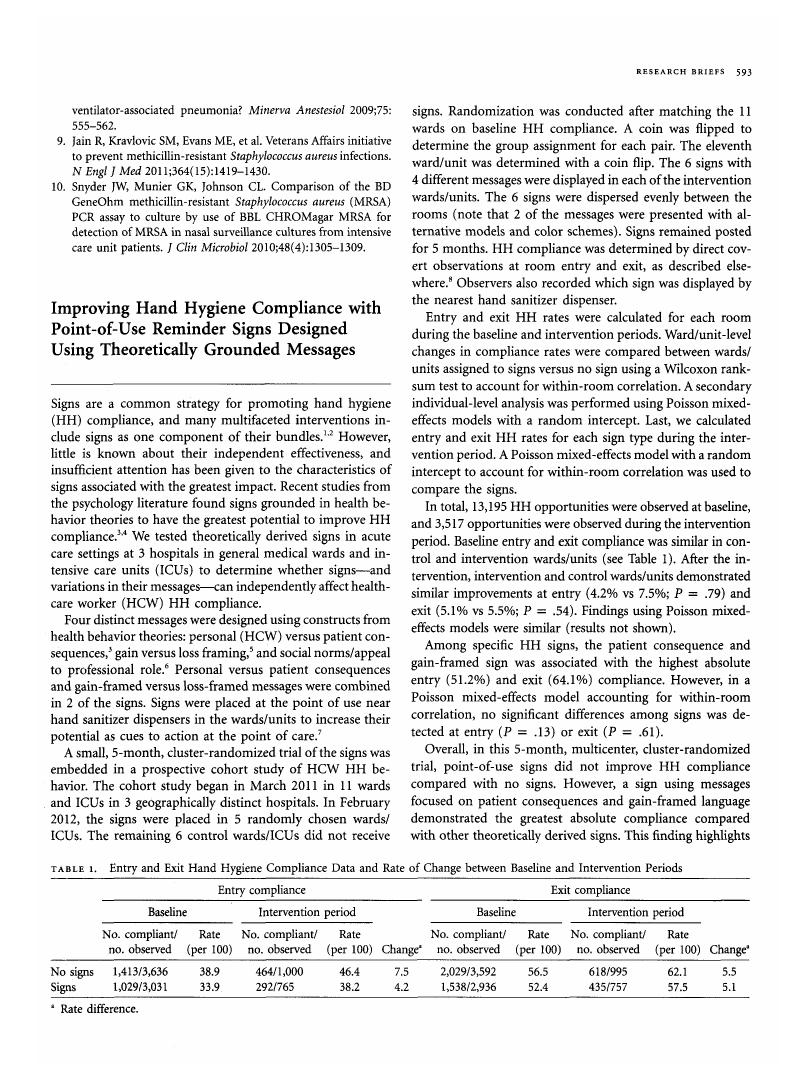Crossref Citations
This article has been cited by the following publications. This list is generated based on data provided by Crossref.
Moura, Maria Luísa
Fenley, Juliana C.
Baraldi, Márcia M.
and
Boszczowski, Ícaro
2015.
Translational Research in Hand Hygiene Compliance.
Current Treatment Options in Infectious Diseases,
Vol. 7,
Issue. 1,
p.
14.
Musuuza, Jackson S.
Barker, Anna
Ngam, Caitlyn
Vellardita, Lia
and
Safdar, Nasia
2016.
Assessment of Fidelity in Interventions to Improve Hand Hygiene of Healthcare Workers: A Systematic Review.
Infection Control & Hospital Epidemiology,
Vol. 37,
Issue. 5,
p.
567.
Pennathur, Priyadarshini R.
and
Herwaldt, Loreen A.
2017.
Role of Human Factors Engineering in Infection Prevention: Gaps and Opportunities.
Current Treatment Options in Infectious Diseases,
Vol. 9,
Issue. 2,
p.
230.
Vander Weg, Mark W.
Perencevich, Eli N.
O’Shea, Amy M. J.
Jones, Michael P.
Vaughan Sarrazin, Mary S.
Franciscus, Carrie L.
Goedken, Cassie Cunningham
Baracco, Gio J.
Bradley, Suzanne F.
Cadena, Jose
Forrest, Graeme N.
Gupta, Kalpana
Morgan, Daniel J.
Rubin, Michael A.
Thurn, Joseph
Bittner, Marvin J.
and
Reisinger, Heather Schacht
2019.
Effect of Frequency of Changing Point-of-Use Reminder Signs on Health Care Worker Hand Hygiene Adherence.
JAMA Network Open,
Vol. 2,
Issue. 10,
p.
e1913823.
Boyce, John M.
2019.
Current issues in hand hygiene.
American Journal of Infection Control,
Vol. 47,
Issue. ,
p.
A46.
Rutter, Sophie
Stones, Catherine
and
Macduff, Colin
2020.
Communicating Handwashing to Children, as Told by Children.
Health Communication,
Vol. 35,
Issue. 9,
p.
1091.
Clancy, C.
Delungahawatta, T.
and
Dunne, C.P.
2021.
Hand-hygiene-related clinical trials reported between 2014 and 2020: a comprehensive systematic review.
Journal of Hospital Infection,
Vol. 111,
Issue. ,
p.
6.
Chen, Wenlin
and
Tseng, Chung-Li
2021.
What are healthcare workers’ preferences for hand hygiene interventions? A discrete choice experiment.
BMJ Open,
Vol. 11,
Issue. 11,
p.
e052195.
Kovacs-Litman, Adam
Muller, Matthew P
Powis, Jeff E
Ricciuto, Dan
McGeer, Allison
Williams, Victoria
Kiss, Alex
and
Leis, Jerome A
2021.
Association Between Hospital Outbreaks and Hand Hygiene: Insights from Electronic Monitoring.
Clinical Infectious Diseases,
Vol. 73,
Issue. 11,
p.
e3656.
Ragonese, Barbara
Mularoni, Alessandra
Valeri, Andrea
Campanella, Maria
Corso, Brigida
Fazzina, Maria Luisa
Barone, Maria Angela
Arena, Giuseppe
Lombardo, Rosario
and
Luca, Angelo
2023.
Reducing Carbapenem-Resistant Enterobacteriaceae Using the Targeted Solution Tool.
Journal of Nursing Care Quality,
Vol. 38,
Issue. 1,
p.
47.
Wang, Lucheng
Byrd, Karen
Quinn, Phillips
and
Hamilton, Terrie
2025.
Hand hygiene practices among restaurant consumers: A quasi-experimental study.
International Journal of Hospitality Management,
Vol. 130,
Issue. ,
p.
104265.


